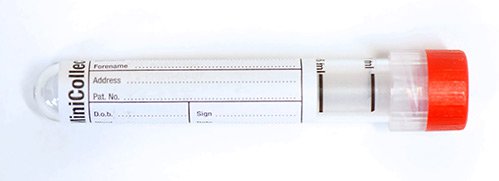Androstenedione
Chemical Pathology
Notes
Androstenedione (D4) is produced in the adrenal glands and gonads and is a precursor steroid for testosterone and oestrogens (oestrone and oestradiol). Measurement may be indicated for:-
- investigation of high testosterone in a woman
- management of CAH due to 11ß- or 21-hydroxylase deficiency
- diagnosis of 17ß-hydroxysteroid dehydrogenase deficiency
Elevated androstenedione levels can cause symptoms or signs of hyperandrogenism in women. Men are usually asymptomatic, but through peripheral conversion can occasionally experience mild symptoms such as gynaecomastia.
Most mild-to-moderate elevations in androstenedione are idiopathic. However, pronounced elevations of androstenedione may be indicative of androgen-producing adrenal or gonadal tumors.
Sample requirements
For adults, blood taken into a 5mL gold top tube (or rust top for the Acute Unit)

For children, blood taken into a 3.5mL rust top tube

For neonates, blood taken into a 1.0mL red top minicollect tube

Storage/transport
Send at ambient temperature to the laboratory. If unavoidable samples can be stored refrigerated overnight.
Required information
Relevant clinical details including reason for the request.
Turnaround times
Samples are sent for analysis to a referral laboratory, with results expected back within 2 weeks.
Reference ranges
Adults
- Female (pre-menopause): 0.9 - 7.5 nmol/L
- Female (post-menopause): 0.4 - 2.9 nmol/L
- Male (18-40yrs): 1.1 - 5.6 nmol/L
- Male (41-67yrs): 0.8 - 4.7 nmol/L
Paediatrics
- Neonates: <8.0 nmol/L
- Female tanner stage 1: <1.8 nmol/L
- Male tanner stage 1: <1.1 nmol/L
Further information
To learn more about androstenedione access Supra Regional Assay Service
For information on androgen excess access http://emedicine.medscape.com/article/273153-overview
Page last updated: 06/09/2023